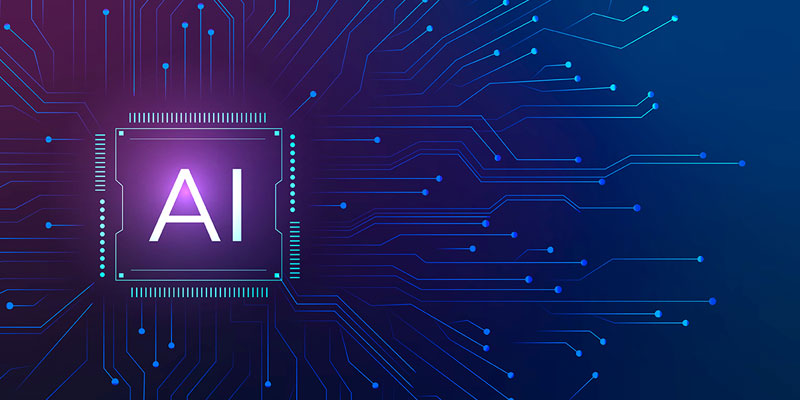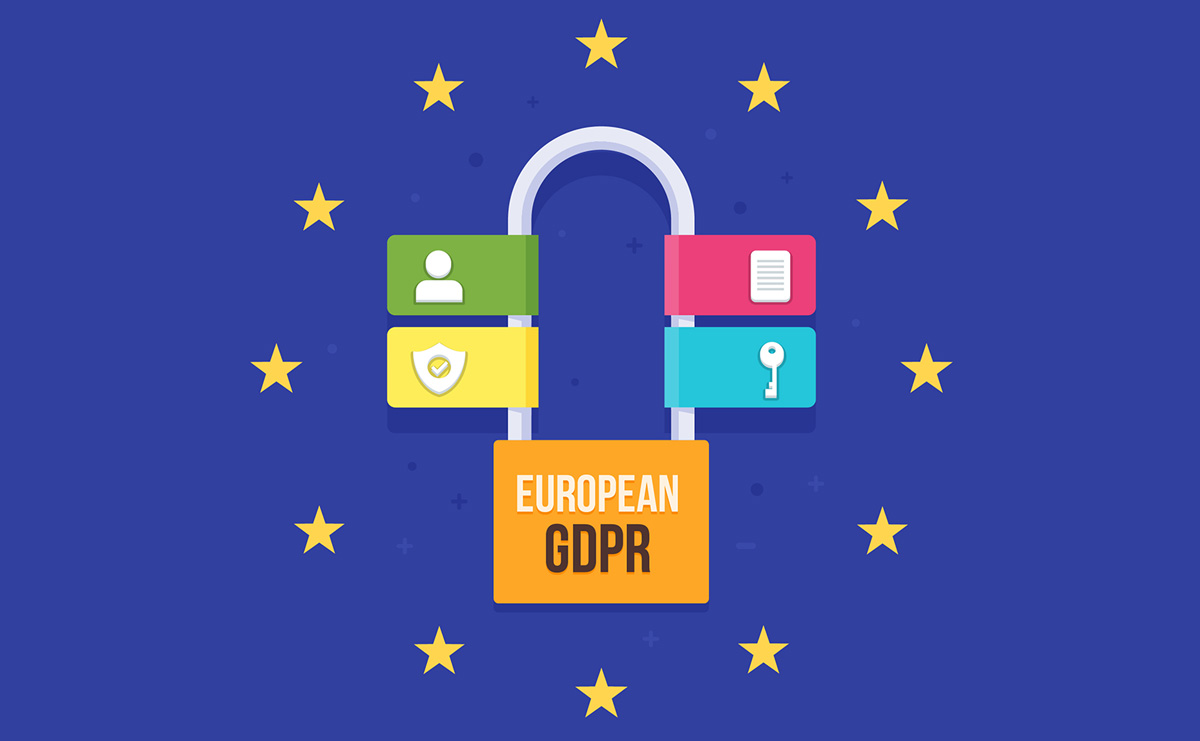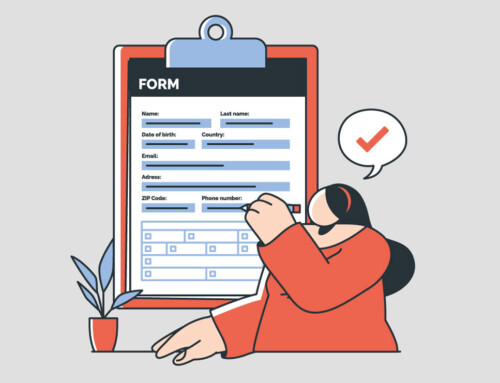Contents
AI and GDPR: Navigating the Complex Landscape of Data Protection
Artificial Intelligence (AI) has become integral to modern technology, transforming industries and shaping the future. AI’s capabilities are broad and impressive, from personalized marketing strategies to healthcare innovations. However, the rapid growth of AI also presents significant challenges, particularly in data privacy. In the European Union, the General Data Protection Regulation (GDPR) serves as a robust framework designed to protect individuals’ data and privacy rights. As AI evolves, understanding its intersection with GDPR is crucial for businesses, legal professionals, and data handlers. The relationship between GDPR and AI is complex, as AI’s need for vast datasets often conflicts with GDPR’s strict principles of data minimization and user consent.
Understanding the Basics of GDPR
The General Data Protection Regulation (GDPR) is one of the world’s most comprehensive data privacy laws. It was introduced to address growing concerns about privacy and personal data protection in the digital age. Officially enacted on May 25, 2018, the GDPR places a significant responsibility on organizations to give EU citizens greater control over their personal data and ensure that this information is handled responsibly and transparently. This underscores the seriousness of data protection under GDPR.
One of the most significant aspects of GDPR is its global reach, which is a testament to its far-reaching impact. Unlike previous data protection laws that primarily applied to companies operating within national borders, GDPR extends its jurisdiction to any organization that processes personal data of individuals residing in the European Union, regardless of the company’s location. This means that if a U.S. company, for example, offers services to EU citizens or monitors their behavior, it is subject to GDPR, even if the company has no physical presence in the EU. This extraterritorial application underscores the global significance of the General Data Protection Regulation in terms of data privacy.
Moreover, GDPR introduces a significant shift in liability for non-compliance. The regulation applies to both data controllers and data processors. A data controller is any organization that determines the purposes and means of processing personal data. In contrast, a data processor acts on behalf of the controller and handles the data according to their instructions. Both entities must comply with the regulation, and data processors are now equally liable for non-compliance, a significant shift from previous data protection laws where only controllers were primarily accountable. This change in accountability is a key feature of the General Data Protection Regulation.
AI’s Role in Data Processing
Artificial Intelligence (AI) has transformed the way we handle data, allowing machines to sift through huge amounts of information and uncover valuable insights faster and more accurately than ever before. At the heart of AI are Machine Learning (ML) algorithms, which rely on large datasets to learn, adapt, and improve over time. These algorithms detect patterns, make predictions, and even automate decision-making. However, AI’s dependence on these vast amounts of data—especially personal data—brings significant challenges, particularly when it comes to following data protection laws like the General Data Protection Regulation.
The Importance of Data in AI
For AI to function effectively, it must be trained on large datasets representing various scenarios, behaviors, and inputs. This training is the key to AI’s ability to make accurate predictions, such as recognizing speech, diagnosing medical conditions, or predicting consumer behavior. The more diverse and expansive the dataset, the more robust the AI model becomes, instilling confidence in its predictive powers.

However, many datasets AI systems rely on often include personal data such as names, addresses, financial records, purchasing habits, and sensitive information like health data or biometric identifiers. This makes AI systems inherently data-intensive, posing significant privacy concerns. The gravity of the situation is heightened when General Data Protection Regulation principles like data minimization and purpose limitation come into play, as they often conflict with AI’s need for large datasets.
Personal Data in AI Systems
AI often works with personal data in a way that goes beyond simple data collection. AI systems analyze, interpret, and, in many cases, draw inferences from personal information. For example, in healthcare, AI might process vast amounts of patient data to make diagnostic predictions, while in marketing, AI can analyze purchasing behaviors to offer personalized recommendations.
Using personal data in AI brings several questions regarding compliance with GDPR, particularly around the definition of personal data itself. GDPR defines personal data as any information relating to an identifiable individual. AI systems can introduce new risks as they process data to create profiles or make decisions.
AI can infer sensitive information about individuals based on seemingly unrelated datasets. For instance, purchasing data might predict health conditions, socioeconomic status, or personal preferences, even when these inferences were not explicitly disclosed. This raises questions about how inferred data is treated under GDPR, particularly since individuals may not be aware of these inferences.
Through their processing capabilities, AI systems can re-identify individuals from anonymized datasets by cross-referencing information from different sources. This presents a compliance challenge, as the General Data Protection Regulation encourages organizations to anonymize data where possible, but AI’s power to reverse this anonymization can undermine privacy safeguards.
Data Security Concerns in AI
GDPR’s strong emphasis on the security of personal data is of utmost importance. With AI systems handling vast quantities of data, including sensitive personal information, the implementation of robust data security measures becomes a critical necessity to prevent data breaches and unauthorized access.
AI systems, especially during the training phase, can be susceptible to security vulnerabilities. If these vulnerabilities are not adequately addressed, unauthorized parties could gain access to the datasets, leading to potential data breaches. GDPR mandates that organizations must implement appropriate technical and organizational measures to secure personal data, including encryption, access controls, and regular security audits, to mitigate these risks.
Securing AI systems is a highly complex task, significantly more intricate than securing traditional IT systems. This complexity stems from the multiple layers of data processing, storage, and analysis involved in AI. Furthermore, AI models can be vulnerable to sophisticated attacks, such as adversarial attacks, where subtle changes to input data can significantly alter the model’s output. This underscores the need for organizations to ensure that their AI models are robust against such vulnerabilities, necessitating specialized expertise and resources to remain compliant with GDPR’s data security requirements.
Key GDPR Challenges for AI
Artificial intelligence (AI) offers significant advantages in efficiency, innovation, and automation, but it also presents challenges when intersecting with data privacy laws like the General Data Protection Regulation (GDPR). AI’s dynamic nature, particularly in processing vast amounts of personal data, clashes with the stringent requirements of the General Data Protection Regulation, creating a complex regulatory landscape that businesses, developers, and data handlers must navigate to remain compliant. Below are the key GDPR challenges for AI systems.
Transparency and Explainability
A fundamental principle of GDPR is transparency, requiring organizations to inform individuals about how their data is processed, for what purposes, and the possible consequences. AI systems, especially those employing deep learning and complex machine learning algorithms, often function as “black boxes” with decision-making processes that are not easily explainable, even to their creators. This lack of explainability poses a direct challenge to GDPR’s transparency obligations. While the regulation does not explicitly state it, GDPR implies that individuals have the right to understand the logic behind automated decisions that significantly impact them, such as credit approvals or job applications. Developing Explainable AI (XAI) is essential for meeting these requirements, even though it is still an evolving field.
Data Minimization and Purpose Limitation
GDPR mandates that personal data collection be limited to what is necessary for specific, legitimate purposes, adhering to the principles of data minimization and purpose limitation. However, AI systems often require large datasets to perform well, creating tension between the need for extensive data and GDPR’s restrictions on data collection. Additionally, AI’s tendency to repurpose data for uses beyond the original collection intent raises further compliance concerns. To align with the General Data Protection Regulation, businesses must implement strategies such as data anonymization or develop AI models that work with smaller datasets while protecting personal data.
Consent and Automated Decision-Making
GDPR requires explicit consent from individuals when processing sensitive personal data or when automated decision-making significantly affects them. AI systems, which rely heavily on profiling and automated decision-making, must comply with this requirement, particularly in scenarios where decisions have a legal or significant impact. One of the major challenges for AI is obtaining valid, informed consent from individuals, especially given the complexity of AI processes. Furthermore, GDPR’s Article 22 restricts automated decision-making without human involvement, demanding human oversight or explicit consent, which complicates the application of AI in these situations.
Data Security and Anonymization
Under the General Data Protection Regulation, data security is paramount, obligating organizations to safeguard personal data against breaches and unauthorized access. With their reliance on extensive datasets, AI systems are particularly vulnerable to data security risks during data collection, storage, and processing. While GDPR promotes anonymization to protect personal data, AI systems can often re-identify individuals by correlating seemingly anonymized data points, making proper anonymization difficult. Businesses must take comprehensive measures to secure data, including encryption and clear data retention policies while managing the challenges of anonymization in AI.
Cross-Border Data Transfers
AI systems often operate globally, processing data from various jurisdictions, which adds complexity when complying with GDPR’s strict regulations on cross-border data transfers. GDPR restricts the transfer of personal data outside the European Economic Area (EEA) unless the destination country provides adequate data protection, or specific safeguards, such as Standard Contractual Clauses, are in place. AI systems relying on cloud-based infrastructure must ensure that cloud providers comply with GDPR’s rules, a challenge that requires careful due diligence and contractual safeguards.
Bias and Fairness in AI
General Data Protection Regulation emphasizes fairness in data processing, prohibiting unjust or discriminatory outcomes. However, AI systems can unintentionally introduce bias, mainly if the training data contains inherent biases. For example, an AI system trained on biased recruitment data may unfairly discriminate against certain demographic groups. To comply with GDPR’s fairness principles, organizations must regularly audit AI systems to identify and mitigate bias, ensuring that decisions made by AI do not result in discriminatory outcomes.
In summary, while AI offers transformative potential, it also brings significant challenges to maintaining compliance with the General Data Protection Regulation. Businesses must take proactive steps to address issues related to transparency, data minimization, consent, security, cross-border transfers, and bias to leverage AI while safeguarding individuals’ rights successfully.
AI and the GDPR’s Data Breach Notification Requirements
GDPR has strict requirements for processing personal data, including how organizations must handle data breaches. As AI systems become more integrated into various industries, ensuring compliance with GDPR’s data breach notification rules is essential, mainly since AI systems often handle large volumes of personal data.
Under GDPR, a data breach occurs when unauthorized individuals accidentally or unlawfully destroy, lose, alter, or access personal data. When such breaches happen, the General Data Protection Regulation mandates that data controllers notify the relevant supervisory authority within 72 hours unless the breach is unlikely to risk individuals’ rights and freedoms. If the breach poses a high risk to these rights, the affected individuals must be notified immediately.
AI systems, especially those involved in personal data processing, present unique and complex challenges in detecting and managing data breaches. The intricate nature of AI systems and the sheer volume of data they handle can make it difficult to identify breaches promptly, potentially leading to non-compliance with GDPR’s 72-hour notification rule. Moreover, AI’s autonomous decision-making capabilities can heighten the risk of unintentional breaches, further complicating General Data Protection Regulation compliance and underscoring the urgency of the situation.
To ensure compliance, organizations utilizing AI must implement robust security measures, such as encryption (e.g., end-to-end encryption of personal data) and continuous monitoring (e.g., real-time monitoring of data access and usage), to detect breaches early. These measures are not just recommended, but necessary to instill a sense of security and preparedness. Regular audits of AI systems, data minimization, and transparency are also key practices to reduce the risk of breaches. Additionally, organizations should clearly define the role of AI in processing personal data and ensure that any breaches involving AI are properly reported to supervisory authorities and affected individuals.
The Future of AI and GDPR
The intersection of AI and GDPR represents a critical focus point as both technological advancements and regulatory frameworks evolve rapidly. With AI capabilities growing exponentially, there is an increasing reliance on vast amounts of personal data for development and operational purposes. Simultaneously, concerns about data privacy are intensifying, especially with regulations like the GDPR that seek to protect individuals’ personal information from misuse. As AI technologies advance, navigating this complex intersection presents new challenges that demand attention.
AI is progressively integrated into various sectors, including healthcare, finance, marketing, law enforcement, and autonomous vehicles. This expanding use of AI amplifies concerns about how personal data is collected, processed, and shared. AI’s ability to automate decisions, predict behaviors, and influence outcomes makes it a powerful tool but also a potential risk to privacy. The increasing prevalence of AI systems means that the volume of personal data being processed will grow exponentially, raising significant concerns about data privacy. Whether it is healthcare data used in medical AI systems or consumer data utilized for predictive analytics in marketing, the potential risks of AI to privacy become more apparent as the technology evolves.
The rise of emerging technologies like quantum computing, the Internet of Things (IoT), and blockchain further expands AI’s potential, but they also introduce new privacy challenges. For instance, IoT devices generate real-time data, which AI systems analyze and use to automate responses. This real-time data collection heightens the risks of General Data Protection Regulation non-compliance, as massive amounts of personal data are processed across various devices and networks.
To address the unique challenges posed by AI, the European Union has proposed the AI Act, a groundbreaking legislative effort aimed at regulating AI technologies. The AI Act seeks to create a unified approach to AI governance across Europe, ensuring that AI systems are safe, transparent, and aligned with fundamental rights, including privacy. This significant legislative effort, if adopted, will complement the General Data Protection Regulation by shaping how AI systems are developed and deployed across industries, reinforcing the importance of responsible data handling.
The AI Act introduces a risk-based framework for regulating AI, categorizing systems into four risk levels: unacceptable, high, limited, and minimal. High-risk AI systems, such as those in critical sectors like healthcare, law enforcement, and financial services, will face stricter requirements, including robust data privacy protections and mandatory human oversight. This risk-based approach is designed to align with the GDPR’s emphasis on transparency and accountability in data processing.
By enforcing additional regulations specific to AI, the AI Act aims to complement the GDPR, ensuring transparency and explainability in AI operations. AI developers will need to demonstrate how their systems adhere to data protection principles, thereby creating a cohesive framework where both regulatory standards work in tandem. Just as the GDPR has influenced global data privacy practices, the AI Act is poised to set a global standard for AI governance, significantly shaping the future of AI development and deployment worldwide. Businesses operating within the EU, as well as those outside the region that process the personal data of EU citizens, will need to comply with both regulatory frameworks, further underlining the global impact of the AI Act.
Regarding automated decision-making, GDPR imposes strict regulations on decisions made solely by AI without human involvement when those decisions significantly affect individuals. As AI advances, automated decision-making is expected to play a more prominent role in credit scoring, insurance underwriting, employment screening, and criminal justice industries. Under GDPR, individuals have the right not to be subject to decisions based solely on automated processing if those decisions have legal or similarly significant effects. Moving forward, businesses must implement mechanisms that allow individuals to challenge AI-driven choices and ensure that human oversight is in place where necessary.
To comply with GDPR’s requirements, many businesses are adopting human-in-the-loop systems, where AI assists decision-making. However, the final decision is reviewed and approved by a human. This approach safeguards against potential errors or biases in AI systems, ensuring individuals retain the right to meaningful human intervention in critical decisions.
Ensuring GDPR Compliance with RunSensible
RunSensible plays a pivotal role in helping businesses and legal professionals ensure compliance with GDPR while maintaining efficient AI-powered workflows. Its comprehensive suite of tools simplifies the complexities of GDPR by integrating secure data handling practices and customizable workflows. By addressing key concerns such as data security and privacy, RunSensible mitigates risks and ensures that AI systems remain within GDPR’s regulatory boundaries. With built-in privacy safeguards and real-time monitoring, RunSensible not only enhances operational efficiency but also strengthens regulatory compliance, enabling businesses to seamlessly align their AI innovations with GDPR requirements.
Final Thoughts
In conclusion, the intersection between artificial intelligence (AI) and the General Data Protection Regulation (GDPR) highlights the complex balance between innovation and privacy. While AI brings remarkable advancements across industries, its reliance on vast amounts of personal data challenges the core principles of GDPR, such as transparency, data minimization, and individual rights. Businesses and legal professionals must adopt a proactive approach, ensuring that AI systems are designed with privacy safeguards and comply with GDPR’s stringent requirements. As AI continues to evolve and expand its role in society, staying aligned with GDPR will be crucial in fostering trust, accountability, and responsible data handling in the digital age. The urgency of this issue cannot be overstated, as the future of AI and the trust of the public depend on responsible data handling within the framework of robust privacy regulations like the GDPR.
Frequently Asked Questions
Does AI fit into GDPR?
AI can fit within the framework of GDPR, but it presents unique challenges related to data privacy, transparency, and accountability. GDPR emphasizes data minimization, transparency, and individuals’ rights, such as access, correction, and deletion of personal data, which AI systems must accommodate. Additionally, automated decision-making powered by AI is restricted under GDPR, requiring meaningful human oversight. To comply, organizations using AI must ensure data protection by design, incorporating safeguards like anonymization, and remain accountable by establishing clear agreements with AI vendors. While AI can be GDPR-compliant, it requires careful planning and adherence to privacy principles.
Does AI conflict with GDPR?
AI can conflict with GDPR in data minimization, transparency, automated decision-making, and data subject rights. AI often relies on large datasets, which can only clash with GDPR’s requirement to collect necessary data. The complexity of AI models, especially in explaining how decisions are made, challenges GDPR’s transparency rules. Additionally, GDPR restricts fully automated decision-making that impacts individuals unless specific conditions are met, which can be at odds with AI’s reliance on automation. Ensuring individuals can access, correct, or delete their data is also more complex in AI systems, making full GDPR compliance a strategic challenge that requires careful planning.
How does the GDPR affect AI-based applications?
The GDPR affects AI-based applications by imposing strict requirements on data privacy, transparency, and accountability. AI systems must comply with data minimization rules, collecting only necessary data, which can limit their data-hungry nature. However, the most crucial requirement is transparency. AI applications need to explain how they process personal data and make automated decisions, despite the complexity of some models. The GDPR also restricts automated decision-making that significantly affects individuals, requiring human oversight or explicit consent. Additionally, AI systems must enable individuals to exercise their rights to access, rectify, or delete personal data. Finally, GDPR mandates data protection by design, ensuring privacy safeguards like anonymization are built into AI applications from the start.
Disclaimer: The content provided on this blog is for informational purposes only and does not constitute legal, financial, or professional advice.







